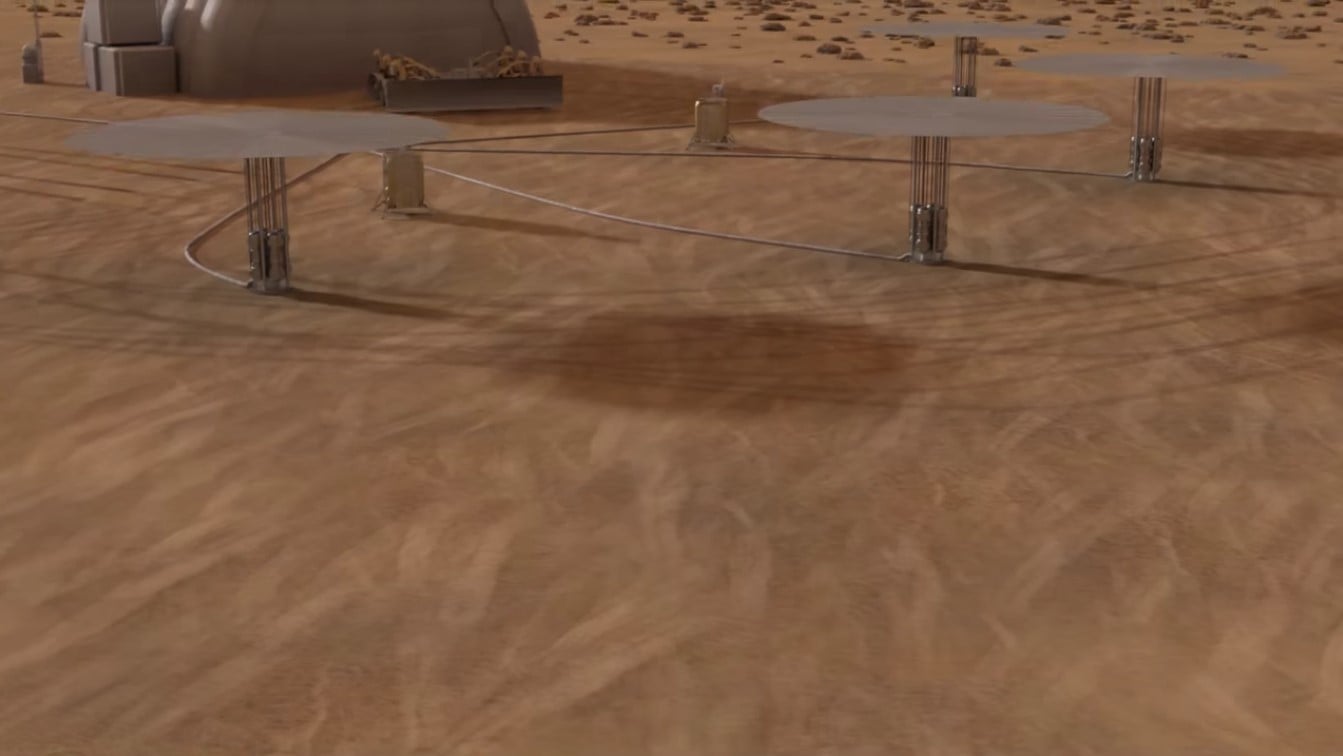The problem of powering a colony on Mars, or other planets is an issue that we will need to have an answer for some day. NASA is looking to miniature nuclear reactors as an that answer. They will soon be testing these miniature power sources in the Nevada desert to see if they are a viable solution.
Coffee Can-Sized Nuclear Reactors
NASA has partnered up with the Department of Energy to produce miniature nuclear reactors that can be used when humanity reaches for the stars. These mini fission reactors, which produce energy by splitting atoms, come in two models 1 and 10 kilowatts. That may not sound like a lot but it is. The average US household burns through about 5 kilowatts per day. NASA missions have, until now, been dealing with a fraction of that power.
One Giant Step for NASA
The Curiosity rover has just 120 watts and the New Horizons, which zipped past Pluto in 2015, has just 240 watts. These missions are based on nuclear batteries which consist of plutonium cores that give off radiation which is transformed into energy for on-board systems.
These new Kilopower reactors will generate five to fifty times more energy and last for years or even decades. These nuclear reactors can also manage themselves so there is little danger in their operation. The internal systems can manage how much power the nuclear reactor is putting out and lower it when the load drops.
The US has only ever used one nuclear reactor in space. Back in 1965 it sent the SNAP-10A, or SNAPSHOT, into space. It was a fission powered nuclear reactor that they were testing. If failed after 43 days due to an on-board electrical system malfunction. Since then, Russia has launched more than 30 small fission nuclear reactors to power satellites.
Safety Concerns?
Due to some bad press and bad accidents, nuclear power is like the bogeyman of energy production. However, NASA has been using radioactive power for the space program since the 1960’s. These are generally been batteries that simply take the heat energy of plutonium radiation and turn it into electricity. But plutonium is a scarce resource, but uranium, is abundant in comparison. People still fear nuclear fallout from an explosion at launch time.
However, the amount of uranium in the reactors, which are not active at launch, would pose very little threat to the population. In fact, you generally get more radiation on a transatlantic flight, chest X-ray or a CT scan. So the main danger is once it’s gone through the rigors of launch, and space travel. When it gets to its destination and they turn it on. Everything has to remain in balance and operational. So these Kilopower nuclear reactors have a fail-safe system that will turn them off if there is a power failure. Tests next month in the Nevada desert will product about 160 watts of power via two engines. That will bring the nuclear reactor to near 800 degrees Celsius. Then they will do some tests on vital systems to show that the miniature nuclear reactors are relatively safe.
The Final Frontier
These nuclear reactors will help enable larger deep space missions. Think of how many instruments or how large of a robotic vehicle could be powered by 1 kilowatt, five times the Curiosity. How large of a settlement on Mars could be powered by a handful of these? Because of its distance from the Sun and the dust that gets kicked up in the atmosphere, solar power is less effective on Mars. These miniature nuclear reactors could be the ultimate solution to sustaining human life there.





